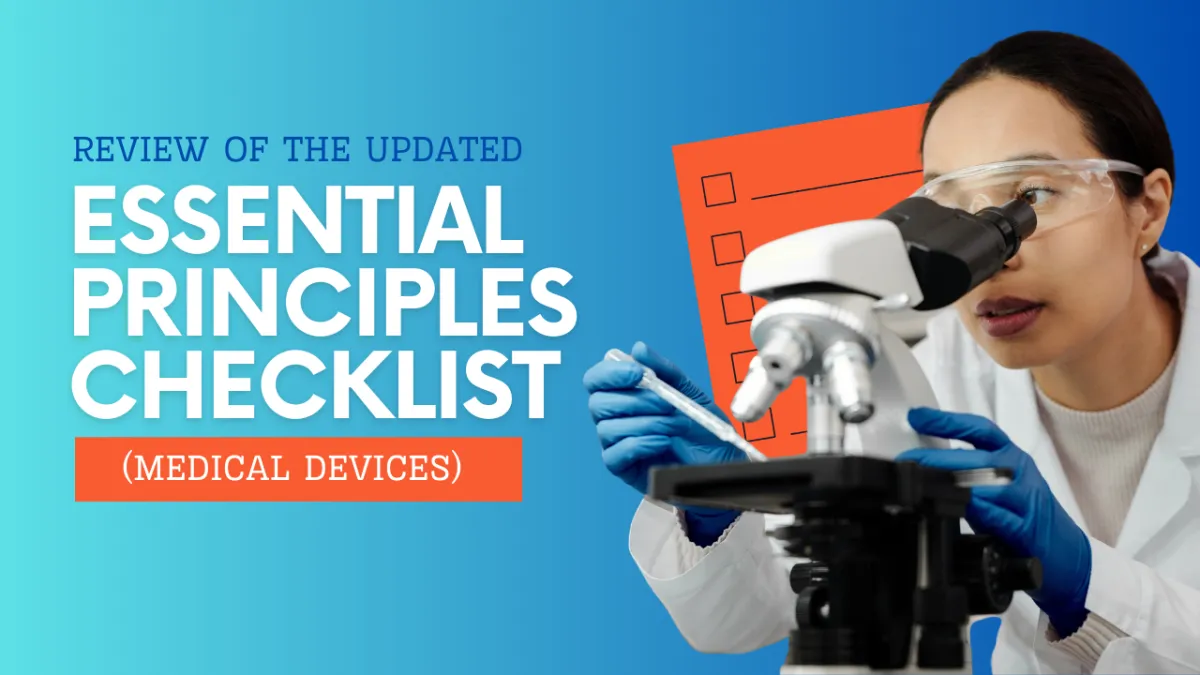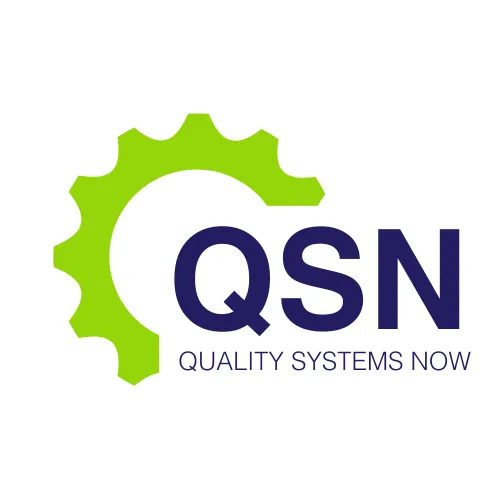LATEST NEWS

Review of the Essential Principles Checklist Medical Devices Update
By Anne Berry
On 19 February, 2024, the Therapeutic Goods Administration (TGA) updated the Essential Principles checklist (medical devices) template, increasing its length from 23 to 41 pages!
The good news is that the extra length is mainly due to formatting and instructions rather than 18 additional pages of Essential Principles (EPs) requirements.
This article will take a comprehensive look at the new Essential Principles checklist, in relation to the previous checklist. You can check out the new Essential Principles checklist (medical devices), and the associated TGA guidance: Demonstrating compliance with the Essential Principles.
Layout and Instruction Changes
The updated template sports a new cover page that now explicitly states the expectation that manufacturers must:
“demonstrate their medical device complies with the Essential Principles” and
“generate, collate, assess, and maintain scientific and clinical evidence that shows that their devices comply with the Essential Principles. The evidence must be relevant to the device's intended purpose and must be objective, sufficient, and robust.”
The cover page outlines the purpose of the document, being that the Essential Principles checklist is a template that may help manufacturers:
identify the safety and performance requirements that apply to their device
document a rationale for any of the safety and performance requirements that aren't relevant
summarise the evidence manufacturers hold in support of each of the relevant safety and performance requirements
apply for an Australian conformity assessment certificate
comply with regulations as part of a post-market review or investigation
determine if they have considered and addressed all the requirements with supporting evidence.
Some of the instructional changes include better layout and clarity, such as:
Instructions about what to include in each column, that previously appeared on the cover page, are now found in the applicable columns of the instructions table on the second page.
Each clause and subclause number are separated into individual rows within the table – this allows for separate justifications to be aligned to each clause/subclause as applicable. This change brings clarity to a completed checklist but it also accounts for most of the increased length of the template!
The Applicable/Not Applicable column is now split into separate Applicable and Not Applicable columns, with checkboxes for each clause/subclause – this results in a clearer picture of which EPs are applicable to each device. EPs that are marked as not applicable are more evident in this new format prompting a justification as required.
The former Medical Device Standards and Other standards or procedures columns are now merged into one column – both types of standards are to be entered as applicable.
The Evidence of Compliance requirements are the same (direct reference to documents within the manufacturers Quality Management System) with the exception that documents also require to be identified by version in addition to number and title.
Guidance text for each field (that appears when the cursor hovers over the field) is now specific to the clause applicable to that field.
Essential Principles Content Changes
Despite the extra length, the changes in content in the EP table are limited and only occur in Part 2 – Principles about Design and Construction. Apart from some minor clause/subclause renumbering, these changes are:
In Clause 10: Medical devices with a measuring function, subclause 10.3 (a) now states that measurements made by the device “must be expressed in Australian legal units of measurement or be compared to at least one point of reference indicated in Australian legal units of measurement”.
Clause 13 is now titled “Information to be provided with medical devices” (changed from “Information supplied by the manufacturer”) - this section is essentially the same with some formatting and tabulation changes for easier use/reading.
Changes to Section 13A are covered below.
Implantable Device Changes
Additional subclauses have been added to clarify which implantable or active implantable medical devices are covered by, or exempt from, the requirements listed in Section 13A.
Implantable or active implantable medical devices that need to meet the requirements are those that do not fall into any of the 3 groups in the following table (text in italics are devices that have been included in the latest version):
Group
Description of Implantable or Active Implantable Medical Devices
Group 1
Sutures, staples, dental fillings, dental braces, tooth crowns, screws, wedges, plates, wires, pins, clips, connectors or similar articles
Group 2
Devices that are intended by the manufacturer for export only.
Group 3
Devices that are intended by the manufacturer to be wholly, or mostly absorbed by a patient’s body within 6 months of being implanted AND are:
· used as a filler OR
· for haemostasis OR
· for tissue approximation OR
· for fixation of other medical devices within tissue OR
· similar to medical devices listed in bullet points above.
Allowing Electronic Patient Information
Clauses 13A.2, 13A.3 and 13A.4 have been updated to allow patient information to be provided other than as hardcopy documentation. This applies to:
· Patient implant cards
· Patient information leaflets.
However, electronic information must also be in a format accessible to the patient.
Interestingly, “the unique device identifier (if any)” has been removed from the patient implant card requirements, leaving the name and model of the device, batch code, and lot/serial number only.
The new checklist also clarifies in Subclause 13A.4 (2)(b), that the information font height requirement of “at least 1 millimetre high” only applies “if the number, letter or symbol, or letter or number in a symbol, is included in a patient implant card or patient information leaflet”.
Have you completed a gap analysis yet?
Have you reviewed your essential principles checklists against the new version for each of your medical devices (or family of devices)?
Are your essential principles checklists up to date?
Do you have medical devices using new technologies and not sure how to complete the checklist?
Need help?
If you need assistance with either completing new essential principles checklists, or completing a gap analysis of existing devices, then please reach out to us Quality Systems Now and book a free consulting call for a conversation about what you need.
